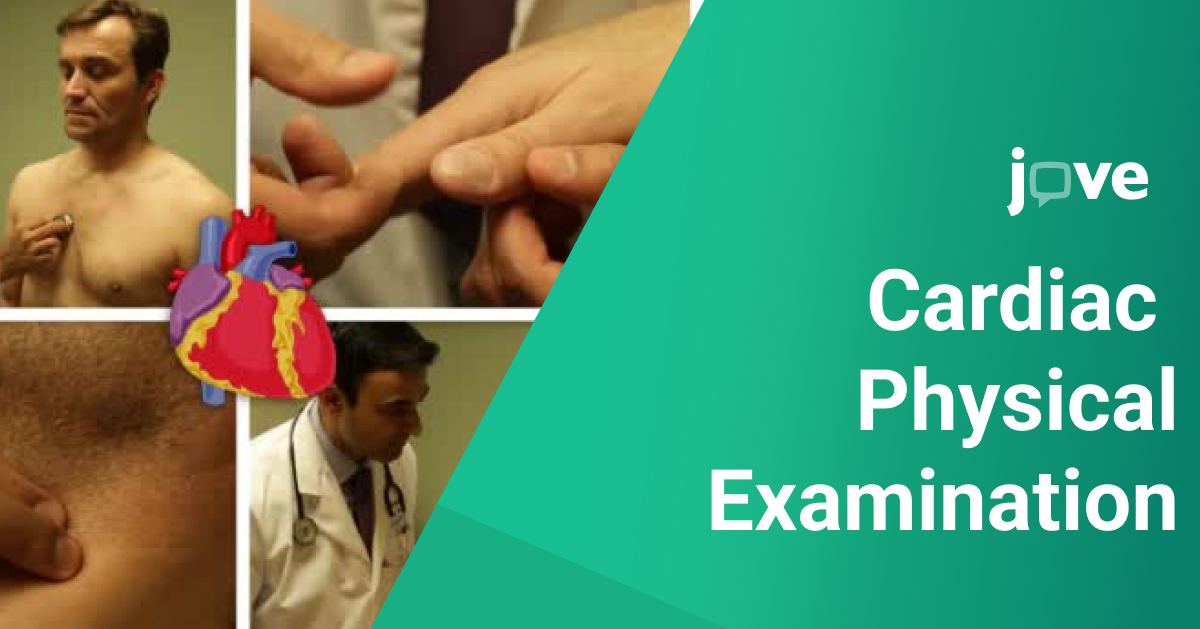In this blog post, we will explore the intricacies of a cardiac physical examination, a vital procedure used by healthcare professionals to evaluate the heart's structure and function. This thorough examination is essential for diagnosing heart diseases and monitoring patients who report symptoms such as palpitations. We will delve into the sequence of techniques involved, including inspection, palpation, percussion, and auscultation, with a focus on identifying heaves, thrills, and the point of maximal impulse (PMI). For a comprehensive understanding and detailed visual demonstrations, visit JoVE.com.
What is a Cardiac physical Examination?
A cardiac examination is a comprehensive evaluation used by healthcare professionals to assess the heart's structure and function. This exam is crucial for diagnosing diseases and monitoring the health of patients who report symptoms such as palpitations. The examination typically involves a sequence of techniques including inspection, palpation, percussion, and auscultation, focusing particularly on heaves, thrills, and the point of maximal impulse (PMI).
Key Techniques in Cardiac Examination
The cardiac examination help clinicians detect abnormalities in heart function, structure, and rhythm. A thorough cardiac examination can provide critical insights into the presence of heart diseases, guiding further diagnostic testing and management. Mastery of these techniques is essential for healthcare providers to ensure accurate diagnosis and effective treatment planning.
1.Inspection and Palpation: The examination begins with a visual inspection of the chest to identify any abnormal movements or deformities. This is followed by palpation, where the examiner uses hands to feel the heart's activity:
- Heaves are observed as robust outward movements at the chest wall, suggesting ventricular hypertrophy.
- Thrills are fine vibrations felt under the fingertips, indicating turbulent blood flow typically due to significant valve disorders.
- Point of Maximal Impulse (PMI): Palpated at the fifth intercostal space at the midclavicular line, the PMI provides valuable information about the heart’s size and function.
- Parasternal Heave: Indicates right ventricular hypertrophy and is palpated along the left parasternal area.
2.Percussion and Auscultation: Though percussion is less commonly used today, auscultation remains a vital aspect of the cardiac examination. Using a stethoscope, the examiner listens for abnormal heart sounds, including murmurs and arrhythmias, which are critical for diagnosing heart conditions related to palpitations.
3.Effective Palpation Techniques: These are
- Systematic Approach: Ensure a thorough examination by starting at the heart's apex, moving towards the left sternal border, and finishing at the base.
- Differentiating Heave vs. Thrill: Use the palm for detecting heaves and fingertips for sensing thrills, appreciating the subtle differences in what they signify about heart health.
- Locating the PMI: Best palpated with the patient in a supine position with a slight left lateral tilt, using the fingertips for sensitivity.
Enhancing Your Skills with JoVE.com
For those interested in mastering these examination techniques, JoVE.com provides an excellent resource. JoVE’s comprehensive video library demonstrates each step of the cardiac examination, offering visual and practical guidance. These resources are particularly beneficial for students and professionals looking to refine their skills or understand the nuances of cardiac diagnostics. Watching real-time procedures and expert demonstrations can significantly enhance learning and retention of complex clinical skills.
Conclusion
Understanding and mastering the techniques of cardiac examination are critical for effectively diagnosing and managing patients with palpitations and other heart-related symptoms. By integrating systematic examination methods and utilizing educational resources like JOVE.com, healthcare providers can improve their diagnostic accuracy and provide better care for their patients.
